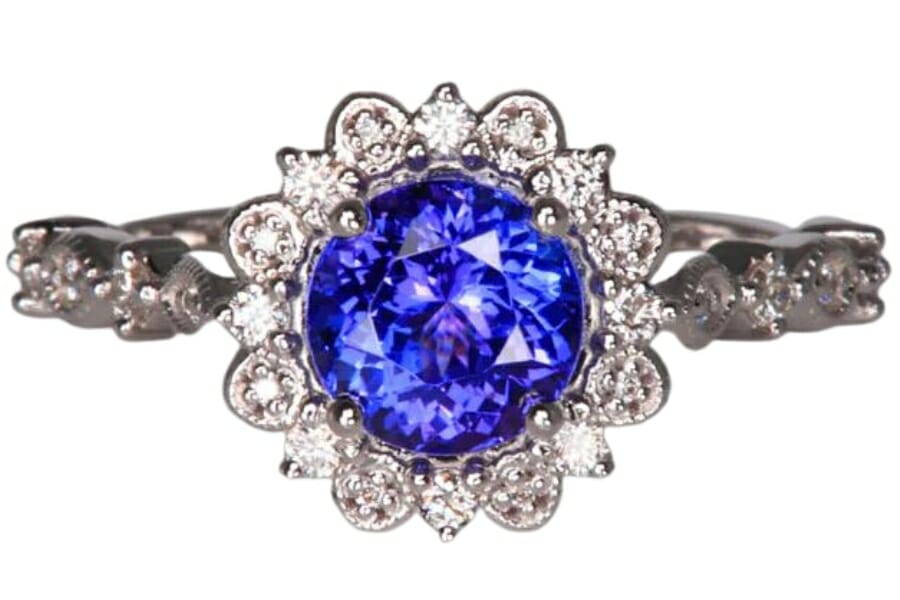In the late 1960s, tanzanite was found in the foothills of Mount Kilimanjaro. Its unparalleled blend of bright blues and purples has captured people’s attention. This rare gem can only be found in Tanzania.
It has made a name and place in a market once dominated by diamonds, rubies, and sapphires. But why is tanzanite so desirable, and why does it sell for so much?
We’re not kidding when we say tanzanite is exclusive to Tanzania; that makes it around 1,000 times rarer than a diamond. Then, there’s the eye-catching color—its brilliant hues can shift from sapphire blue to violet depending on the angle of light.
In a nutshell, the charm of tanzanite isn’t just skin-deep. Its value is a cocktail of rarity, beauty, and investment potential. So, let’s start exploring and find out what makes this gemstone worth its weight in carats!
What Tanzanite Is
Ah, tanzanite—the gemstone that turns heads with its kaleidoscope of blues and violets. This beauty has captured the world’s attention, first uncovered in the late ’60s near Mount Kilimanjaro in Tanzania.
It’s a variety of the mineral zoisite, but trust me, “tanzanite” rolls off the tongue a lot easier, and it sounds as exotic as it looks!
The beautiful trichroism of tanzanite makes it stand out from other gems. To put it more simply, it shows different colors, from blue to violet to burgundy, depending on how you look at it and how bright it is.
This ability to change colors like a chameleon makes each piece of tanzanite unique, like a piece of art that keeps showing new sides of itself. Whether in a necklace or an engagement ring, tanzanite has a special magic that’s hard to resist.
These aesthetic qualities, paired with its relative rarity, contribute to its high price on the market. Collectors and gem lovers consider it a prized possession, not just for its immediate aesthetic appeal, but as a potential investment.
We’ve listed the most common colors of tanzanite and how much they cost approximately. It’s important to note that these aren’t the only colors but the more popular ones.
Blue Tanzanite
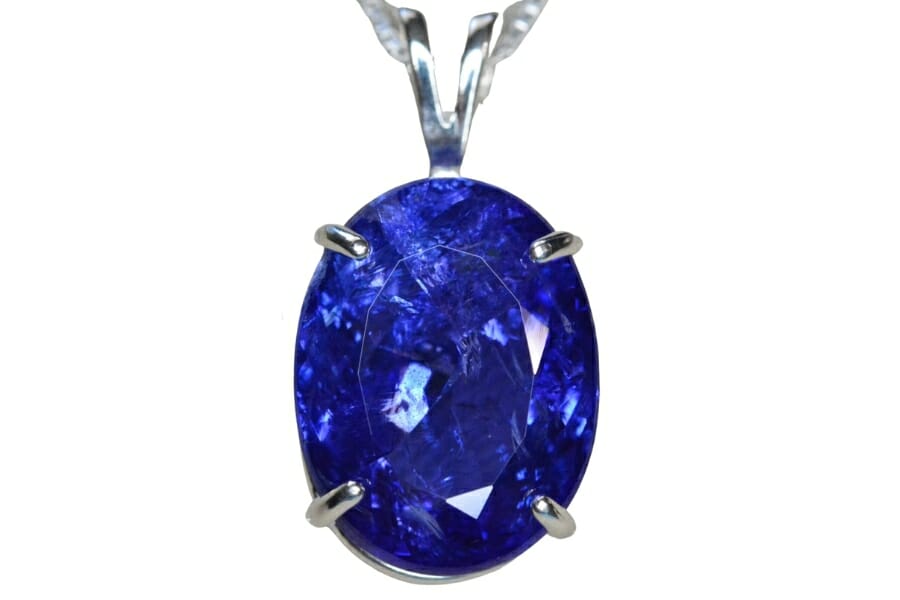
Blue tanzanite’s charming beauty is a real treat for the eyes. Imagine a gem that is so brightly blue that it looks like you’re looking into the ocean. This gem’s color can range from a lighter sky blue to an intense, almost royal blue, making it stand out.
When light dances across its facets, the stone seems to come to life, showing flashes of indigo and shades of teal, as if each tanzanite is a tiny sea all on its own.
But here’s the catch: blue tanzanite isn’t just any blue gemstone. It’s trichroic, which means that you can see three different colors depending on how you look at it.
So, its main and most valued color is blue, but if you turn it or twist it, you can see shades of violet or even a hint of burgundy.
How much is a blue tanzanite worth
Tanzanite, which displays a deep, rich blue, is generally prized and commands higher prices. It can fetch prices from $300 to $800 per carat.
Green Tanzanite
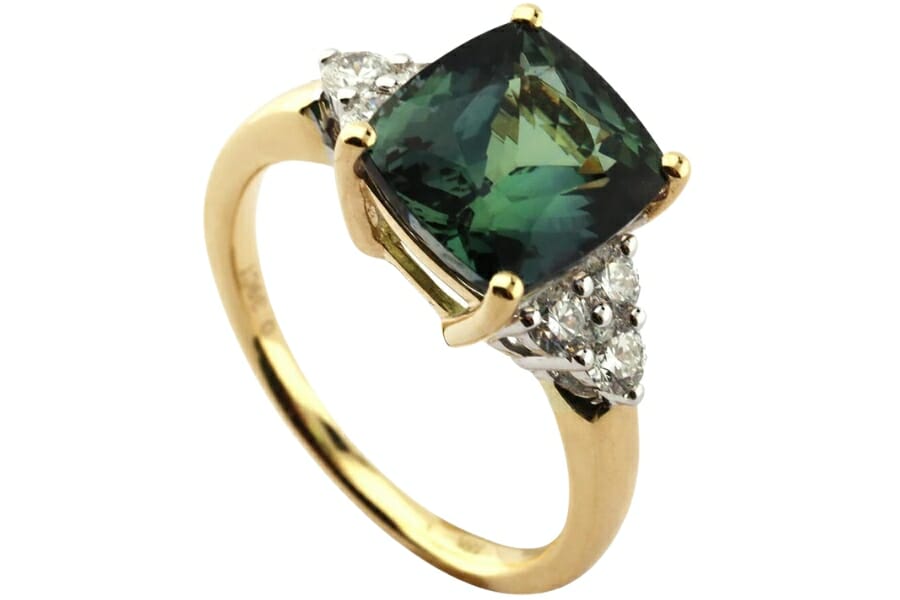
Green tanzanite captures the essence of a lush, green forest. Unlike its blue and violet siblings, green tanzanite is not as common, which makes it a treasure for collectors and gem lovers. It can be a soft, minty green or a deeper, more intense shade.
Like the blue tanzanite, it also has a trichroic quality, which can show different colors when viewed from different angles. Even though its main color is green, don’t be surprised if you see flashes of blue or even a hint of violet when you tilt it under the light.
How much is a green tanzanite worth
Its rarity can sometimes make it more valuable to collectors and gem enthusiasts who appreciate its unique coloration. Its prices could range between $100 to $1,000 per carat.
Purple Tanzanite
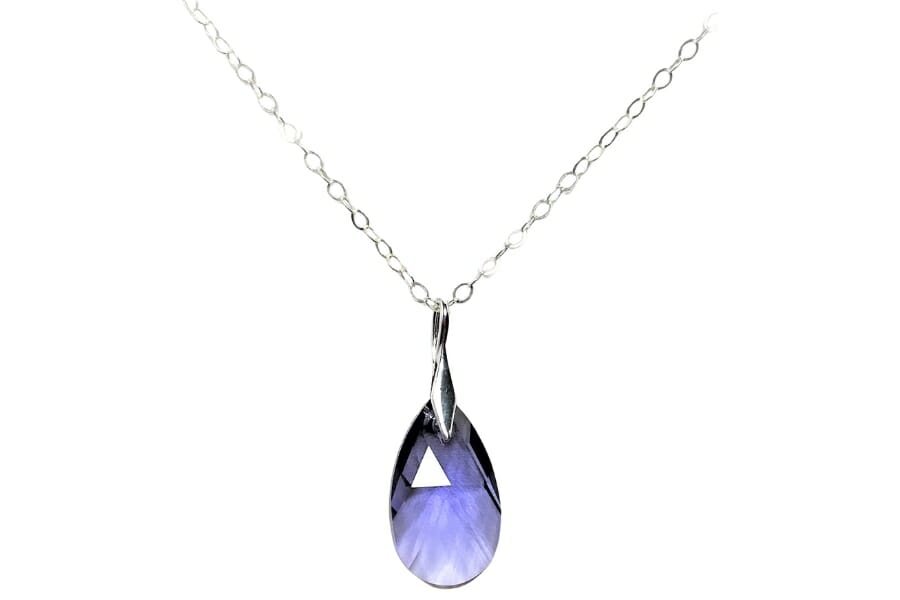
Purple tanzanite is the epitome of regal elegance in the gemstone world. Imagine a deep, mesmerizing purple that seems almost electric, as if it were channeling the mystery of a faraway galaxy.
This particular shade of tanzanite is a show-stopper, radiating colors that fluctuate between lavender, violet, and sometimes even a dash of pink, depending on how the light catches it.
Its color depth can range from delicate lilac to a more intense, eye-catching purple that draws you in and keeps you fascinated.
How much is purple tanzanite worth
High-quality purple tanzanite with exceptional clarity and intense color, prices could easily go upwards between $125 to $550 per carat.
Yellow Tanzanite
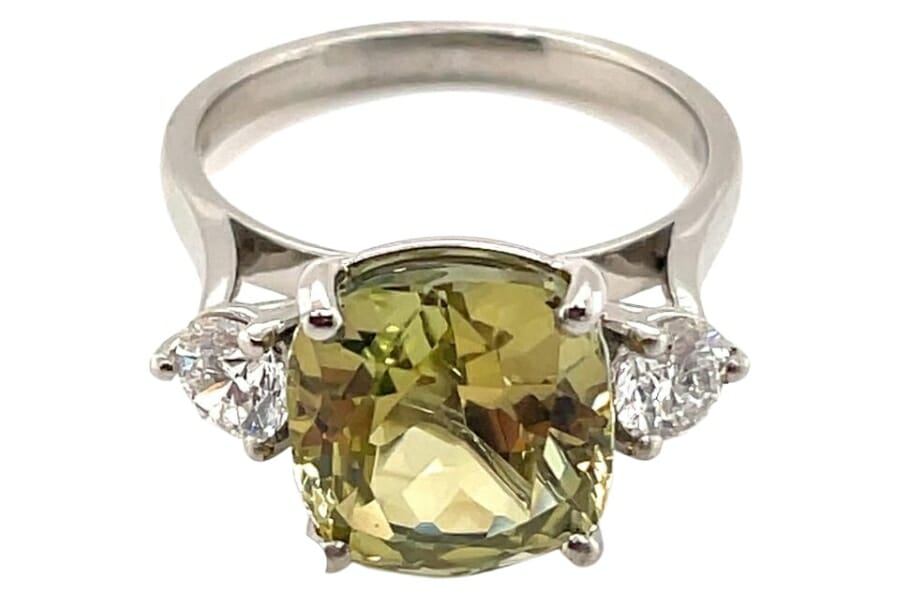
This beautiful gem shines with warm, golden colors like a sunny day, brightening any room or mood. Yellow tanzanite is harder to find than its more popular blue and violet siblings.
This makes it a hot item for collectors and people who love gems. Its colors can range from a soft, buttery yellow to a richer, more golden tone, giving it a sunny, upbeat vibe that’s hard to resist.
But don’t be fooled by its bright color! Yellow tanzanite still has fascinating trichroic qualities that make this family of gemstones so attractive. Depending on how you tilt the stone and how the light hits it, you might see brief flashes of green or even a hint of brown.
How much is a yellow tanzanite worth
Because yellow tanzanite isn’t as common as the blue and violet kinds, which are found more often, its scarcity can add a premium to its price, ranging from $100 to $1,000 per carat.
Why Tanzanite Is So Expensive
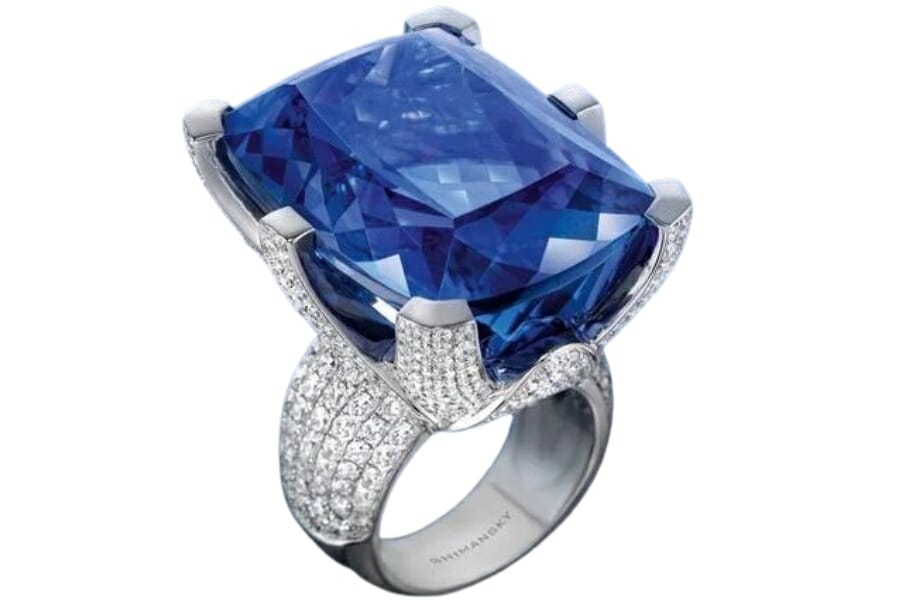
Tanzanite has made it to the center of attention for many reasons, not the least of which is its stunning beauty. Because it is trichroic, the gemstone has beautiful shades of blue, violet, and even bursts of green, yellow, and burgundy.
But this gem’s appeal isn’t just about how pretty it is. It can only be found in one place on Earth: near Mount Kilimanjaro in Tanzania. This makes it seem rare and exotic, which makes it hard to resist.
Because it’s hard to find geologically, it’s a prize that collectors and investors want. Because there aren’t many of them, some people think the stone could become even rarer.
This gives it an investment potential that few other gemstones have. Tanzanite has also become popular for milestone gifts because it represents love, commitment, and a fresh start.
So, it’s easy to see why tanzanite is so highly valued when you think about how beautiful it is, how rare it is, and how it can be both an emotional and a financial investment. This gem is more than just pretty; it is a marvel that can be admired from all sides.
How To Determine The Value Of Tanzanite
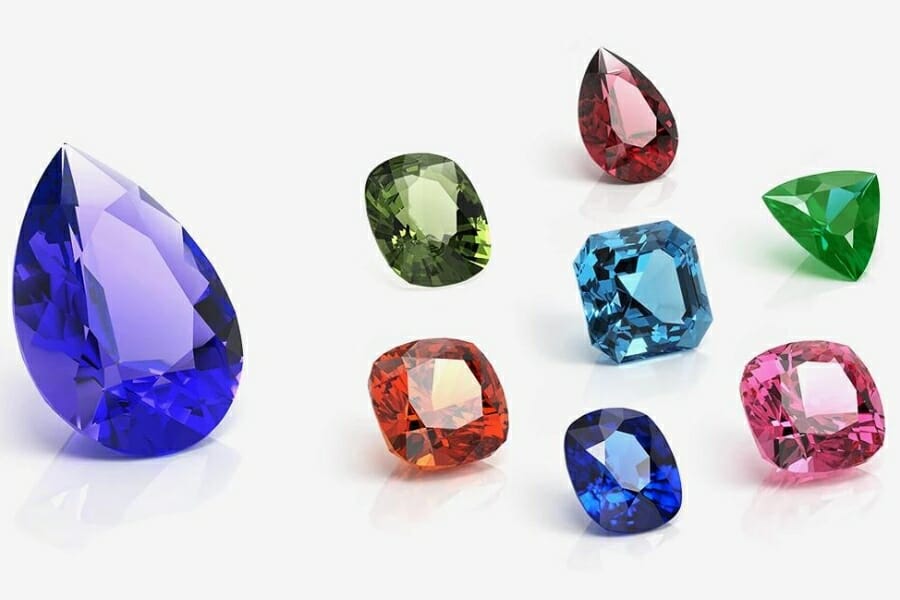
Certainly, several key factors collectively contribute to the pricing of a piece of tanzanite in the market. Here are some of the most significant ones:
Color
One of the most critical factors in determining tanzanite’s value is its color. Deep, saturated blues or violets are generally more valuable than lighter tones. The stone’s trichroic nature—displaying different colors when viewed from different angles—also adds to its allure and price.
Clarity
Tanzanite with fewer inclusions (internal or external flaws) is generally more valuable. Stones with high clarity allow more light to pass through, enhancing brilliance and color.
Cut
A well-cut tanzanite reflects light beautifully, maximizing the stone’s color and brilliance. The skill of the cutter can significantly influence a tanzanite’s value.
Carat Weight
Tanzanite is priced per carat, so size does matter. Larger stones are often more valuable, especially with superior color and clarity.
Rarity
Certain colors of tanzanite are rarer than others. For example, blue tanzanite is generally more available than green or yellow tanzanite, which are rarer and can sometimes command higher prices.
Treatment
Most tanzanite is heat-treated to improve its color. Untreated stones with exceptional qualities can fetch a premium, as they are rarer.
Origin
While tanzanite is only found in Tanzania, the specific mine it originates from can sometimes influence its value.
Market Demand
Like any other commodity, the price of tanzanite is influenced by market demand. Higher demand can drive up prices, especially for top-quality stones.
Certification
Stones certified by reputable gemological laboratories may fetch higher prices as the certification verifies various attributes like color, cut, clarity, and origin, assuring quality to buyers.
Tanzanite Price By Type
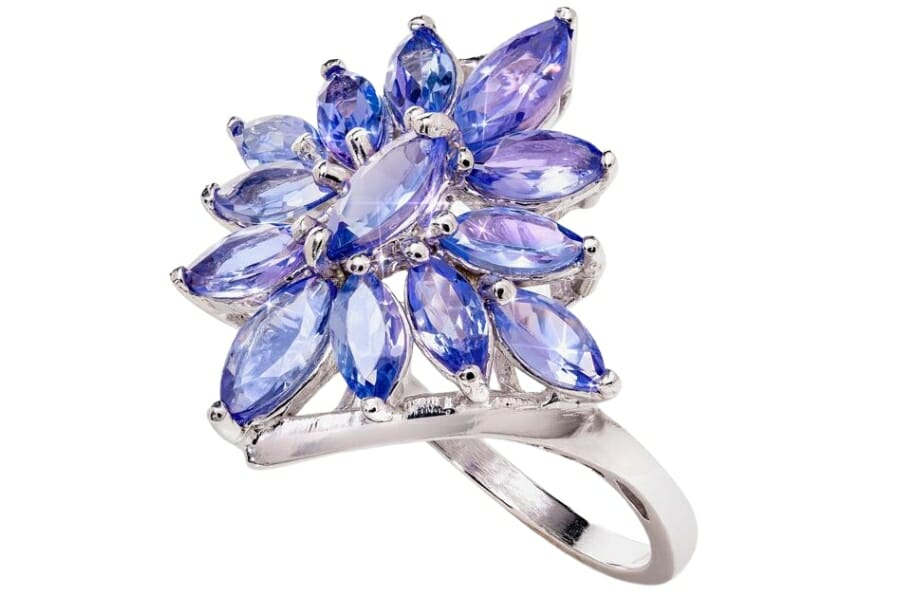
You need to know all the information you can get to know the value and how much a tanzanite is worth.
Below is a list of the most common tanzanite colors and how much they cost.
Tanzanite values by color
| Color | Location | Price (Per Carat) |
| Blue tanzanite | Any | $300 to $800 |
| Green tanzanite | Any | $100 to $1,000 |
| Purple tanzanite | Any | $125 to $550 |
| Yellow tanzanite | Any | $100 to $1,500 |
Different colors of tanzanite are worth different amounts and cost. Let’s look at how much tanzanite cost in other units.
Tanzanite pricing by unit of measurement
| Measurement | Price |
| A carat of tanzanite | $100 to $1,000 |
| A gram of tanzanite | $500 to $5,000 |
| An ounce of tanzanite | $14,180 to $141,750 |
| A kilogram of tanzanite | $500,000 to $5,000,000 |
| A pound of tanzanite | $226,800 to $2,267,960 |
| A ton of tanzanite | $453,592,500 to $4,535,925,000 |
The Most Expensive Tanzanite
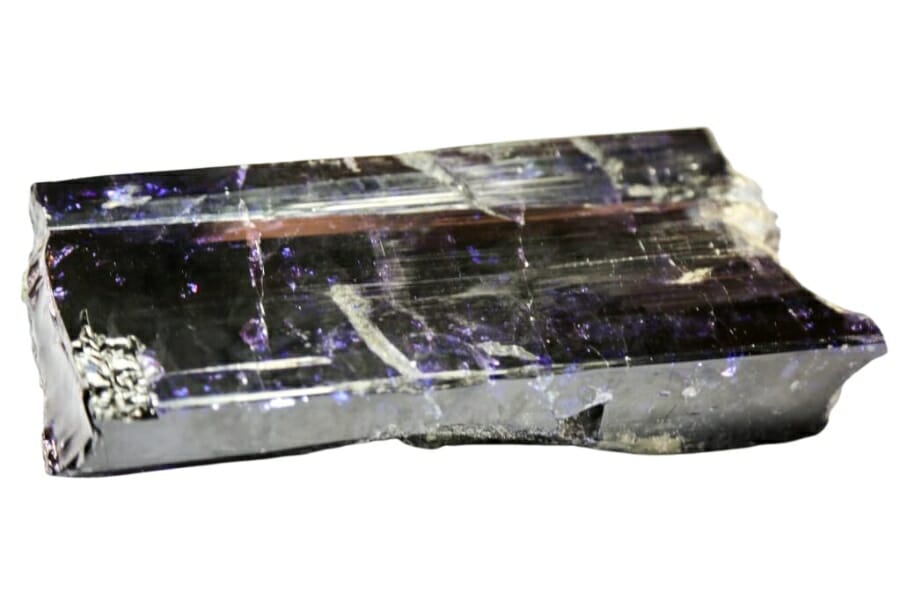
Notably, the largest tanzanite crystals were discovered in 2020 by a Tanzanian miner named Saniniu Laizer. The stones weighed 9.27 kg and 5.1 kg and garnered significant media attention.
Laizer reportedly sold the stones to the Tanzanian government for 7.74 billion shillings, or about $3.35 million at the time. Still, these were rough, uncut stones, and their value as gem-quality finished products could differ.
How To Get An Appraisal On Your Tanzanite
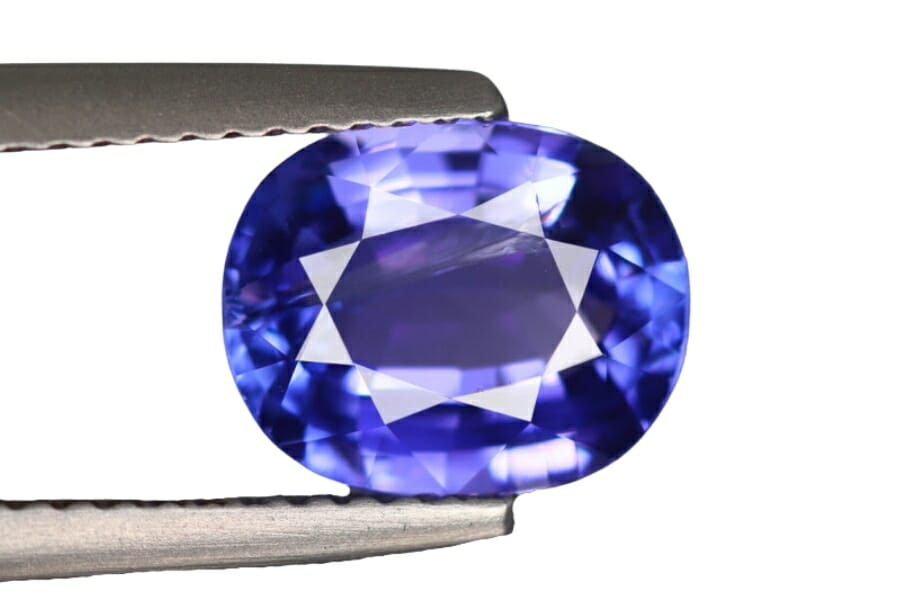
Getting an appraisal for your tanzanite gemstone is essential in determining its market value and authenticity.
Find a certified gemologist or a jewelry appraiser who specializes in colored gemstones. Make sure they are certified by a well-known gemological or appraisal organization, such as the Gemological Institute of America (GIA), the American Gem Society (AGS), or the International Gemological Institute (IGI).
Before choosing an appraiser, you should read reviews, ask for recommendations, or even ask trusted jewelry shops for advice.
Once you’ve chosen an appraiser, you’ll need to set up a time for the appraisal. If you can, select a service that can be done while you wait so you can keep your tanzanite while it is being appraised.
Bring any certificates, receipts, or other paperwork about the tanzanite with you. During the evaluation, this information can be beneficial.
The appraiser will look at your tanzanite’s color, clarity, cut, and carat weight, which are all things that affect its value. They might use microscopes, spectrometers, and other specialized tools to determine what the stone is like.
At the end of the appraisal, the appraiser should give you a detailed report of what he or she found. This should include a description of the tanzanite, an estimate of its worth on the market, and any other relevant information, like how big it is and how it was treated.

